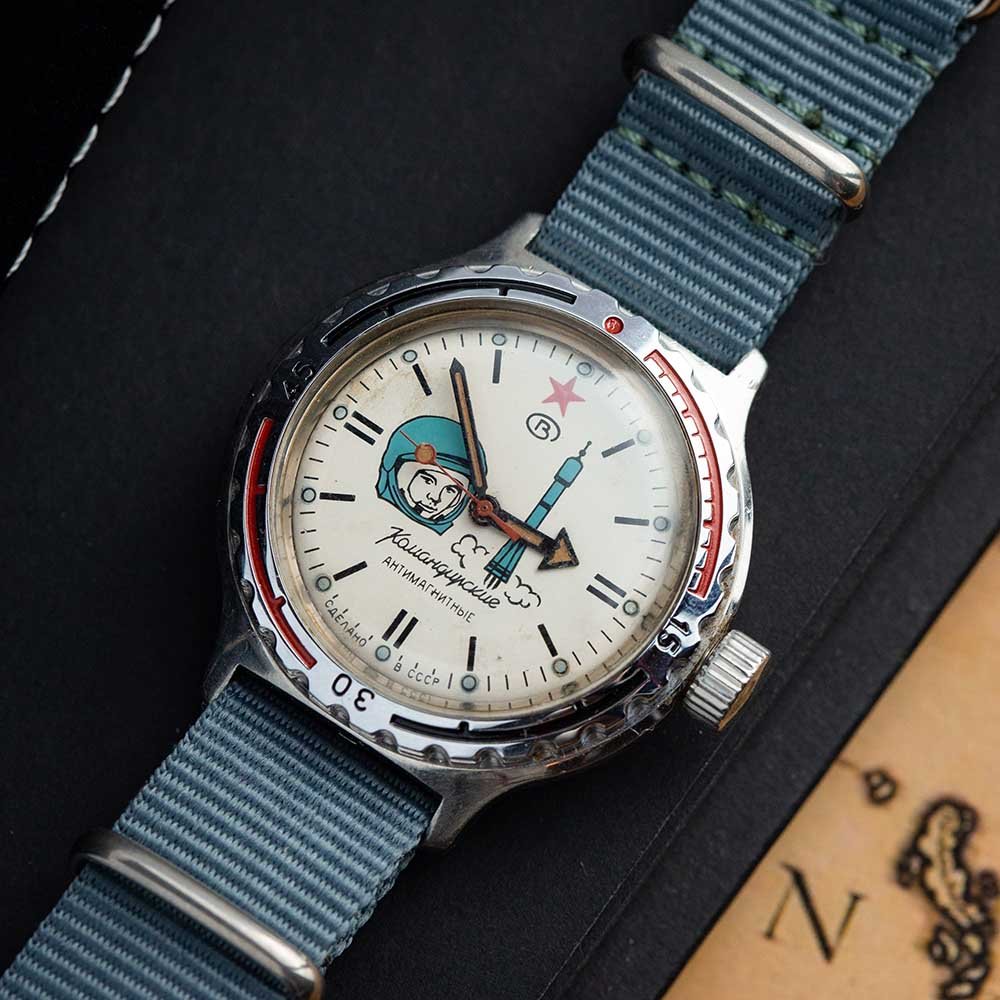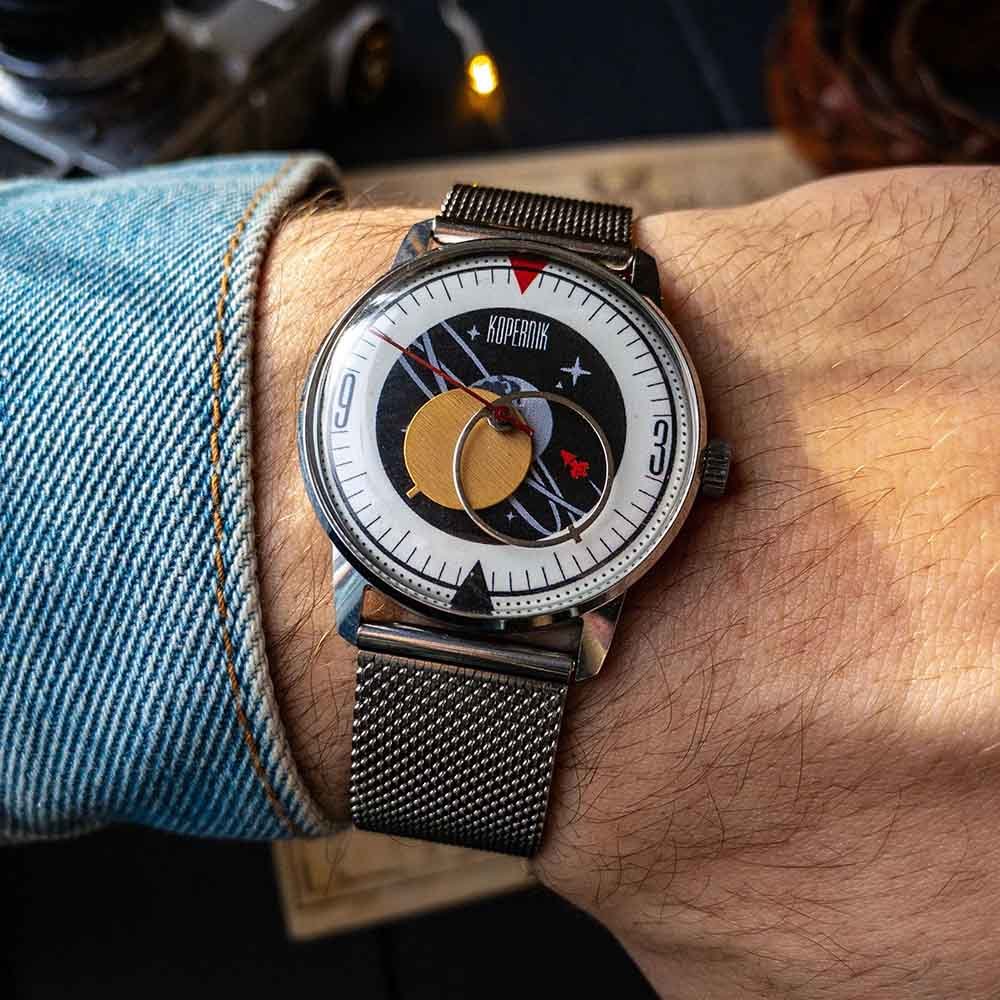Table of Contents
Introduction to Soviet Watches
The world of Soviet watches is a distinct chapter in horological history, marked by robust designs, resilience, and unique mechanical craftsmanship. These timepieces, birthed from necessity and political circumstance, represent a significant era in the timeline of watchmaking, holding a compelling allure for enthusiasts and collectors alike.
Historical Context and Evolution
The Soviet Union’s foray into watchmaking was a journey birthed by political and economic necessity. With the onslaught of the Russian Revolution and subsequent formation of the USSR, the nation had to rebuild its industry, and watchmaking was no exception.
The early Soviet watch industry drew heavily from imported machinery and expertise, notably from the United States’ Dueber-Hampden Watch Company. After purchasing the company’s entire production line in 1929, the Soviet Union embarked on creating its own watchmaking identity.
World War II added an unexpected twist, as watch factories were retooled for military production. Post-war, the watch industry quickly regained momentum, with brands like Pobeda, meaning ‘Victory,’ emerging as symbols of the USSR’s resilience.
The Cold War saw a technological race extend to the realm of watchmaking. Brands like Raketa, Poljot, and Vostok exemplified Soviet ingenuity. These factories produced innovative, reliable watches, many for specific applications – Vostok’s Amphibia, for instance, was a divers’ watch for the Soviet navy.
Interestingly, the 1980 Moscow Olympics led to a flourish of commemorative watches, showcasing unique designs and fostering a sense of national pride. This event marked a high point in Soviet watch production, before the subsequent economic struggles of the late 80s and early 90s led to a decline in the industry.
The Soviet era in watchmaking encapsulates a dynamic interplay of politics, history, and craftsmanship, leaving an indelible mark on horological heritage.

Major Soviet Watch Brands
Three key pillars of Soviet horology stand out: Raketa, Poljot, and Vostok. Each has its own distinct history and contributions to the industry.
Raketa, produced by the Petrodvorets Watch Factory in Saint Petersburg, was known for its resilience. It offered models like Raketa Polar, designed specifically for Arctic explorers. Poljot, meaning ‘flight’, was based in Moscow. Its most famous creation, the Sturmanskie, graced the wrist of Yuri Gagarin during the first manned spaceflight.
Vostok, the third notable brand, hailed from Chistopol. Its fame lies in the creation of the ‘Amphibia,’ a robust divers’ watch that gained a reputation for its durability and resistance under extreme conditions, serving the Soviet navy admirably.
Technological Advancements and Uniqueness
Soviet watchmaking displayed unique prowess, both in mechanical ingenuity and design aesthetics. Its models were built to last and often tailored for specific conditions, showcasing noteworthy resilience.
Raketa’s 24-hour dial watches, designed for use in polar regions, exemplified this distinctive innovation. Similarly, Vostok’s Amphibia’s case design ingeniously used water pressure to enhance its waterproofing capabilities, a design marvel in its time.
Additionally, Soviet watches were characterized by their manually-wound movements, with Poljot’s 3133 chronograph movement being a standout, admired for its reliable and robust nature.
Collecting Soviet Watches: A Niche Interest
Collecting Soviet watches has evolved into a niche interest, drawing in horology enthusiasts and history buffs. The appeal lies not just in the watches’ robustness or mechanical uniqueness but also their historical significance. With each timepiece serving as a tangible relic of the Soviet era, collectors worldwide are fascinated by their inherent resilience, encapsulating the spirit of a time gone by.

The End of an Era: Post-Soviet Watchmaking
The transition from the Soviet Union to the Russian Federation bore significant changes to the watch industry. The economic upheaval led to a dramatic drop in production, and many factories, including Poljot, eventually closed down. However, some like Vostok and Raketa have survived, transforming and modernizing to cater to new demands while maintaining their historical essence. Contemporary Soviet watchmaking is a blend of past heritage and current innovations, reflecting the profound journey of its predecessor.
Conclusion: Legacy of Soviet Watchmaking
The legacy of Soviet watchmaking is far-reaching. It’s not merely about timekeeping instruments but represents a fascinating narrative of resilience, innovation, and the indomitable spirit of a nation. Each timepiece is a physical embodiment of a remarkable historical epoch, resonating with watch enthusiasts and history lovers alike. The Soviet watchmaking era may have ended, but its timepieces continue to tick, serving as enduring mementos of a distinctive chapter in horology.





